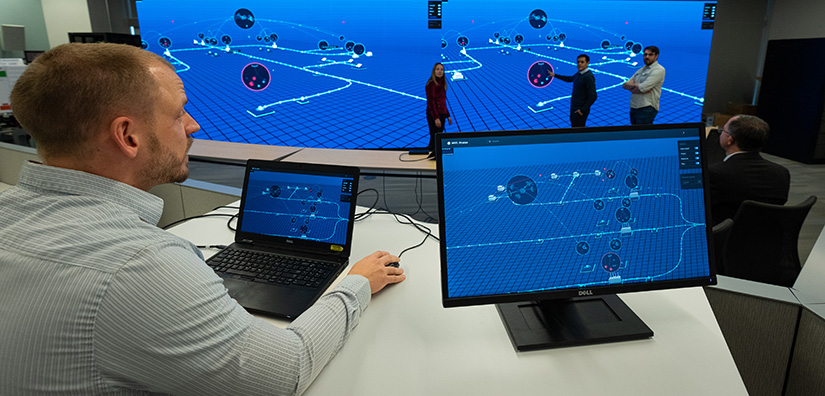Energy Security
Energy security experts at the Energy Systems Integration Facility (ESIF) are looking at the potential of cyber and physical threats to our evolving energy infrastructure as different energy devices come online.

NLR's unique energy system models and cosimulation capabilities are the differentiating factors in realizing proven cybersecurity protocols for increasingly complex energy systems. To match the complexity of modern multilayer grids, analysts develop tools to secure power systems with multiple owners and an increasing dependence on digital communication devices and networks.
The ESIF's power-hardware-in-the-loop simulation capabilities allow researchers to simulate how a cyber disruption would impact a utility network, often using a precise emulation of the real-world system built in the cyber range. Cybersecurity analysts and industry partners can also evaluate the security of a new grid device to pinpoint potential vulnerabilities before it is deployed. NLR provides utility companies and facility managers across the country with site assessments to evaluate existing security controls, identify gaps, and offer prioritized action items to improve organizational protocols.
The ESIF Advantage
Cyber Range
The Advanced Research on Integrated Energy Systems Cyber Range provides the ability to virtualize, emulate, and visualize energy systems subjected to energy disruption scenarios, with the fidelity needed to represent future energy and telecommunication systems—from individual devices to regional grids.
This unique capability makes it possible to safely explore energy system vulnerabilities and mitigation effectiveness by integrating physical hardware throughout the ESIF with the virtual environment. When demonstrations leverage the visualization application of the cyber range, analysts can view real-time changes in power flow, communications, and security alerts for a given system under a variety of cyber-threat scenarios.
Learn more about NLR's research and development in cybersecurity for an evolving grid.
Contact
Share
Last Updated Dec. 4, 2025
